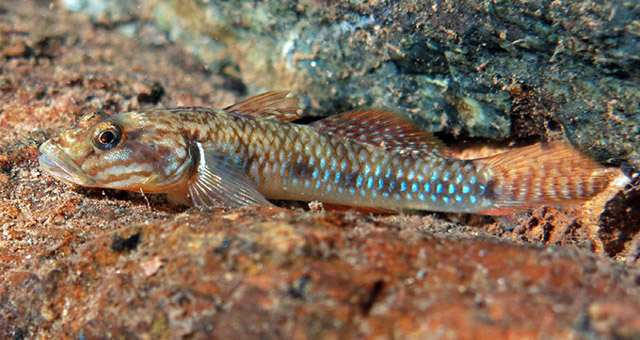| Gobiidae (Gobies), subfamily: Gobionellinae |
| 4.07 cm SL (male/unsexed); 4.53 cm SL (female) |
|
benthopelagic; freshwater |
| Asia: Philippines. |
|
Dorsal spines (total): 7-8; Dorsal soft rays (total): 7-8; Anal spines: 1-1; Anal soft rays: 7-8; Vertebrae: 26-26. This species is distinguished by the following characcters: pectoral fin 14-16 rays (usually 15 rays); nape and posterior part of occipital region with cycloid scales and the scaled area extending anteriorly to around a vertical line through posterior margin of preopercle or a little posterior to this line; longitudinal scales 27-31, predorsal scales 3-11; total vertebrae 26; cephalic sensory pore system usually with B´, C, D(S), E, F, H´, K´, L´, M´, N, and O´, but often lacking one or both side(s) of pore E; cheek with transverse rows of sensory papillae. Colouration: when preserved, lateral and dorsal sides of the body with dark brown mesh-like markings, snout and cheek with three dark brown stripes, and pectoral fin with dark brown band vertically across proximal part of the upper and middle rays except lower 2-6 rays; when fresh, upper and middle parts of pectoral-fin base with bright white vertical band (Ref. 125663). |
| Water temperature of collection sites Estrella Falls was cool even during the hottest dry season (water temperature was 26.5°C, 13 May, 2016), while water in the Malatgao River was warmer (estimated to be nearly 30°C) (Ref. 125663). |
|
Not Evaluated (N.E.) Ref. (130435)
|
| harmless |
|
Source and more info: www.fishbase.org. For personal, classroom, and other internal use only. Not for publication.

